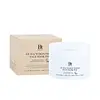What's inside
What's inside
 Key Ingredients
Key Ingredients

 Benefits
Benefits

 Ingredients Side-by-side
Ingredients Side-by-side

Water
Skin ConditioningButylene Glycol
HumectantBetaine
HumectantDipropylene Glycol
HumectantPolyglycerin-3
HumectantAllantoin
Skin ConditioningEthylhexylglycerin
Skin ConditioningArginine
MaskingCarbomer
Emulsion StabilisingPolyglyceryl-10 Laurate
Skin ConditioningDisodium EDTA
Hydroxyethylcellulose
Emulsion StabilisingGluconolactone
Skin ConditioningPhyllostachys Bambusoides Juice
Skin ConditioningPhyllostachys Bambusoides Extract
Skin ConditioningSodium Hyaluronate
HumectantSodium Acetylated Hyaluronate
HumectantWater, Butylene Glycol, Betaine, Dipropylene Glycol, Polyglycerin-3, Allantoin, Ethylhexylglycerin, Arginine, Carbomer, Polyglyceryl-10 Laurate, Disodium EDTA, Hydroxyethylcellulose, Gluconolactone, Phyllostachys Bambusoides Juice, Phyllostachys Bambusoides Extract, Sodium Hyaluronate, Sodium Acetylated Hyaluronate
Psidium Guajava Leaf Extract
AstringentGlycerin
HumectantWater
Skin ConditioningButylene Glycol
HumectantDipropylene Glycol
HumectantPentylene Glycol
Skin Conditioning1,2-Hexanediol
Skin ConditioningPanthenol
Skin ConditioningChaenomeles Sinensis Fruit Extract
AntioxidantCynanchum Atratum Extract
Skin ConditioningLaminaria Japonica Extract
Skin ProtectingDioscorea Japonica Root Extract
Skin ConditioningArtemisia Princeps Extract
Skin ConditioningCamellia Sinensis Leaf Extract
AntimicrobialHouttuynia Cordata Extract
Skin ConditioningCalendula Officinalis Flower Extract
MaskingAllantoin
Skin ConditioningGlyceryl Glucoside
HumectantBetaine
HumectantDipotassium Glycyrrhizate
HumectantSodium Hyaluronate
HumectantSodium Guaiazulene Sulfonate
Ceramide NP
Skin ConditioningPropanediol
SolventPolyglyceryl-10 Laurate
Skin ConditioningCellulose Gum
Emulsion StabilisingEthylhexylglycerin
Skin ConditioningSodium Phytate
Hydrogenated Lecithin
EmulsifyingCitric Acid
BufferingGlucose
HumectantXanthan Gum
EmulsifyingPsidium Guajava Leaf Extract, Glycerin, Water, Butylene Glycol, Dipropylene Glycol, Pentylene Glycol, 1,2-Hexanediol, Panthenol, Chaenomeles Sinensis Fruit Extract, Cynanchum Atratum Extract, Laminaria Japonica Extract, Dioscorea Japonica Root Extract, Artemisia Princeps Extract, Camellia Sinensis Leaf Extract, Houttuynia Cordata Extract, Calendula Officinalis Flower Extract, Allantoin, Glyceryl Glucoside, Betaine, Dipotassium Glycyrrhizate, Sodium Hyaluronate, Sodium Guaiazulene Sulfonate, Ceramide NP, Propanediol, Polyglyceryl-10 Laurate, Cellulose Gum, Ethylhexylglycerin, Sodium Phytate, Hydrogenated Lecithin, Citric Acid, Glucose, Xanthan Gum
 Reviews
Reviews

Ingredients Explained
These ingredients are found in both products.
Ingredients higher up in an ingredient list are typically present in a larger amount.
Allantoin is a soothing ingredient known for its protective and moisturizingg properties. Because of this, it is often added to products with strong active ingredients.
Studies show higher concentrations of this ingredient can promote wound healing.
Though it can be derived from the comfrey plant, allantoin is produced synthetically for cosmetic products to ensure purity.
Learn more about AllantoinBetaine is a common humectant (a substance that promotes retention of moisture). It's known to be gentle on the skin and can help balance hydration.
This ingredient is best for improving hydration and soothing irritated skin. Studies also show it helps even out skin tone.
Fun fact: Betaine is naturally created in the skin and body. The kind found within cosmetic products can be either plant-derived or synthetic.
Another name for betaine is trimethylglycine.
Learn more about BetaineButylene Glycol (or BG) is used within cosmetic products for a few different reasons:
Overall, Butylene Glycol is a safe and well-rounded ingredient that works well with other ingredients.
Though this ingredient works well with most skin types, some people with sensitive skin may experience a reaction such as allergic rashes, closed comedones, or itchiness.
Learn more about Butylene GlycolDipropylene Glycol is a synthetically created humectant, stabilizer, and solvent.
This ingredient helps:
Dipropylene glycol is technically an alcohol, but it belongs to the glycol family (often considered part of the ‘good’ alcohols). This means it is hydrating and gentle on skin unlike drying solvent alcohols like denatured alcohol.
As a masking agent, Dipropylene Glycol can be used to cover the smell of other ingredients. However, it does not have a scent.
Studies show Dipropylene Glycol is considered safe to use in skincare.
Learn more about Dipropylene GlycolEthylhexylglycerin (we can't pronounce this either) is commonly used as a preservative and skin softener. It is derived from glyceryl.
You might see Ethylhexylglycerin often paired with other preservatives such as phenoxyethanol. Ethylhexylglycerin has been found to increase the effectiveness of these other preservatives.
Polyglyceryl-10 Laurate is an ester of lauric acid and Polyglycerin-10.
Polyglyceryl-10 Laurate is a cleansing agent and emulsifier. It helps gather dirt, oil, and other pollutants to be rinsed away. As an emulsifier, it helps prevent ingredients from separating, such as oil and water.
Polyglyceryl-10 Laurate may not be fungal acne safe.
Learn more about Polyglyceryl-10 LaurateSodium Hyaluronate is hyaluronic acid's salt form. It is commonly derived from the sodium salt of hyaluronic acid.
Like hyaluronic acid, it is great at holding water and acts as a humectant. This makes it a great skin hydrating ingredient.
Sodium Hyaluronate is naturally occurring in our bodies and is mostly found in eye fluid and joints.
These are some other common types of Hyaluronic Acid:
Learn more about Sodium HyaluronateWater. It's the most common cosmetic ingredient of all. You'll usually see it at the top of ingredient lists, meaning that it makes up the largest part of the product.
So why is it so popular? Water most often acts as a solvent - this means that it helps dissolve other ingredients into the formulation.
You'll also recognize water as that liquid we all need to stay alive. If you see this, drink a glass of water. Stay hydrated!
Learn more about Water